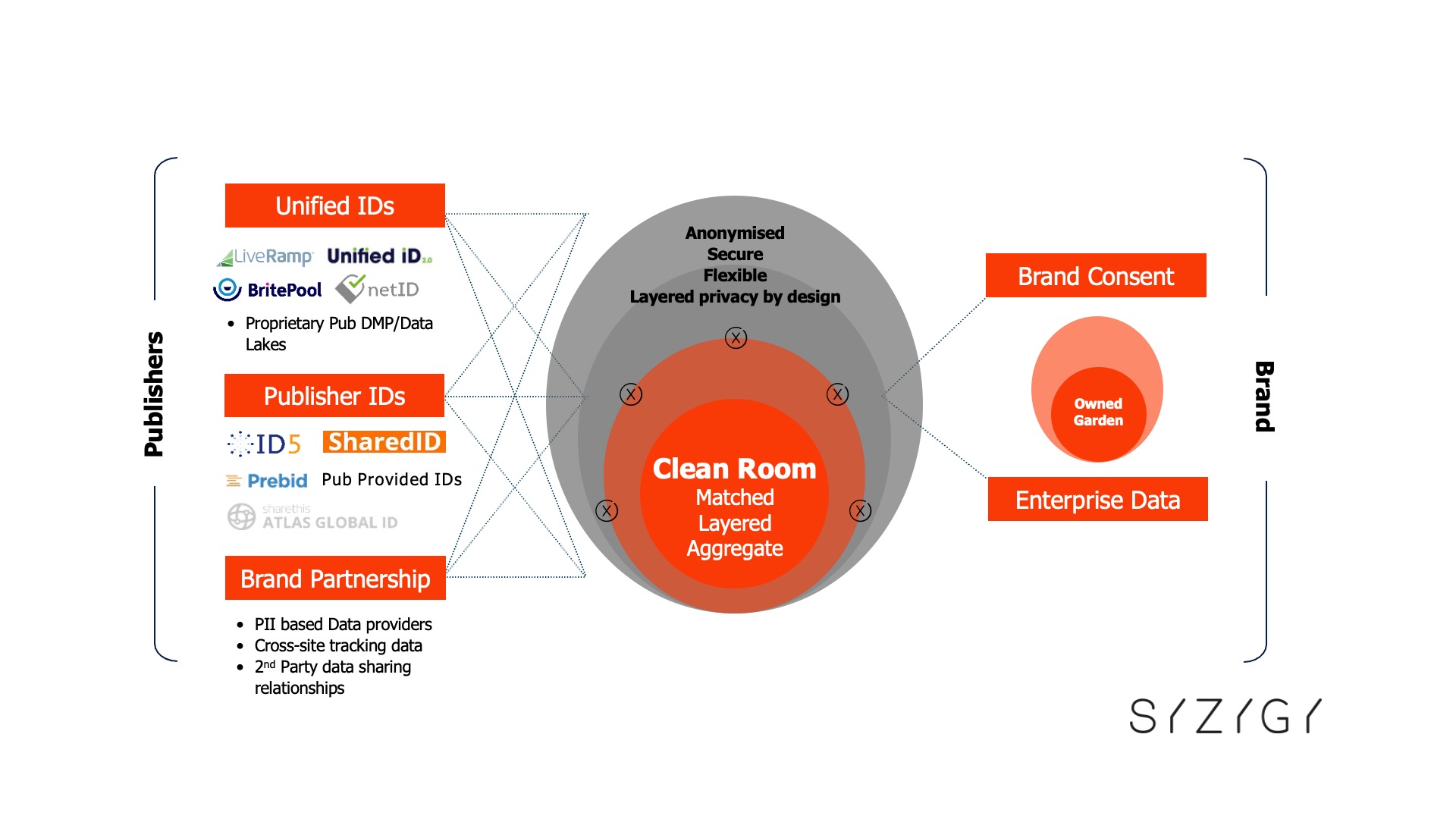Brands are now waking up to the strategic realities of not being able to track all media spend and having fragmented customer journeys, forcing them to rethink how they individualise customer experiences and measure effectiveness, says Anthony Magee, Director of Data and Experience Technology at SYZYGY

The Data Clean Room
There has been a barrage of articles since 2020 explaining the premise of the ‘Clean Room’, so instead of repeating the rhetoric, I’d like to focus on the operational jobs to be done. Here are seven tips to approach Clean Rooms to accelerate value realisation and to build for the future, not just for the demise of 3rd Party Cookies.
Omni-operational 1st Party Data Strategy – Simply put, you should avoid the siloed 1st Party Data strategy trap. It’s not a job for the performance marketing team on their own – a truly comprehensive strategy is required, covering all departments that have a role in the customer experience and have data use cases. Address what, why and how you collect data, as well as innovations in product, proposition and operational practises that will enable scale in use of customer data.
Select the right Clean Room – Don’t be seduced by the promises of immediate scale and avoidance of the challenges we face in targeting, activation and measurement. The best partners are truly agnostic, have flexible architectures to account for the inevitable evolution changes to come, are privacy first, and empower your shift to a long-term scaled 1st Party approach.
Get your ID resolution and owned data housekeeping right – Identity resolutions have been a strategic imperative for the CDO for as long as I’ve been in data and tech – which is longer than I should admit. My approach, and that of my trusted friends in the industry, has been simple – own your own identity graph. It goes without saying that this is the foundation of the positive focus on consumer data privacy, where transparency and data lineage are priorities. So why do so many brands shy away from an ID resolution deployed in their owned virtual private clouds?
Well, maybe it seems too difficult. But the best Clean Room partners make this really straightforward as a fundamental component of a successful Clean Room implementation. Habu, Permutive, AppsFlyer, and Measured are my stand-out partners. They’re truly comprehensive Clean Room solutions with all the super-powers to enable you to deploy your own ID resolution or unlock existing ones.
Rethink consent around omni-channel value exchanges – Value is what drives attention. Human behaviour is rooted in the pursuit of reciprocity. From the dawn of civilisations, we’ve been willing to exchange value. So, it baffles me that many brands still limit their value exchange to siloed channel specific tactics like offers and discounts that are very clearly indistinctive. If you want deeper human connections and more meaningful 1st Party interactions, then simply up your game on value exchange and think bigger. This is by far the biggest focus area for my experience design team. With our clients experimenting with bold new and evolved value exchanges that deliver impressive consent conversions.
Embrace 2nd Party Data exchange partnerships – The demise of 3rd Party Data sharing relationships has highlighted those brands who we’d already worked with on brokering transparent 2nd Party consent exchanges. This is rooted in mutual value for both brands and their customer base – most common are hospitality and travel data exchange partnerships and retail data exchanges. We’ve been forging such partnerships for many years, including between the cruise sector, onshore hotel chains and clothing retailers. Get creative as these can prove highly distinctive value exchanges for prospective customers.
AI matters, so stand up your XOps team – AI is critical to leveraging multiple aggregated IDs and meta data with performance data to more accurately enable full-funnel marketing.
Clean Rooms demand the emergence of the XOps team design to production use this AI and focus on delivery of technology solutions to improve security, operations, customer experience with demonstrable value at scale.
And finally, make it all flexible by design, avoiding technical debt – This is not a pick and mix list of activities, you need to go big or go home with your Clean Room strategy. The way I’ve discussed this with our clients is to invest in the swift shift from operating as channel marketers, to a truly integrated, experience-led organisation. This way, significant investment is not in vain and focuses on avoiding the technical debt that we’ve seen accumulate through DMPs, homegrown data platforms, and DSPs, all of which have required painful reengineering.
The future is bright. I feel we’re clearer now than we’ve ever been about our new purpose as Experience Marketers. One could say it’s a clean slate when it comes to clean rooms.